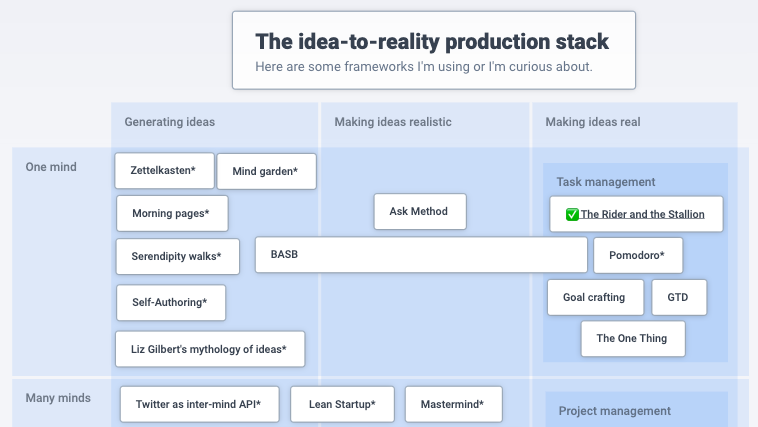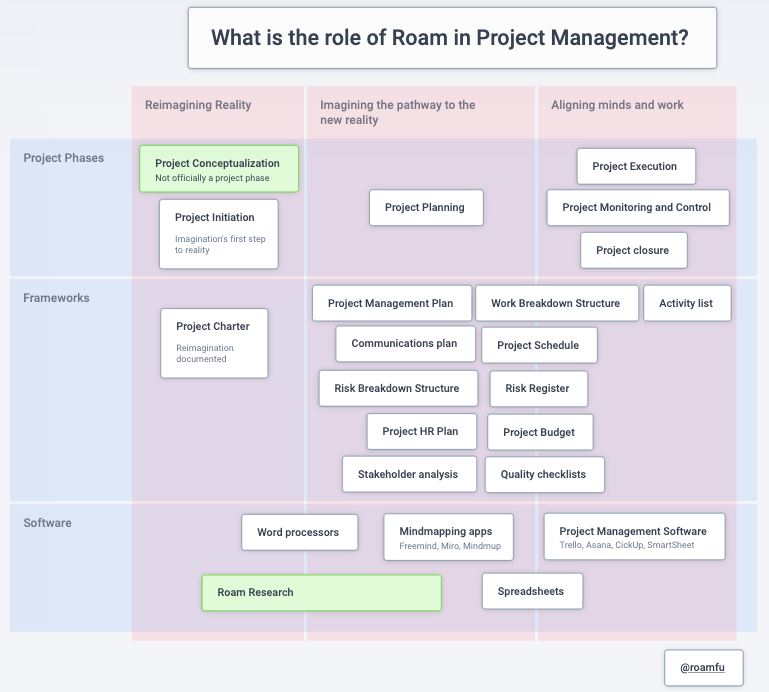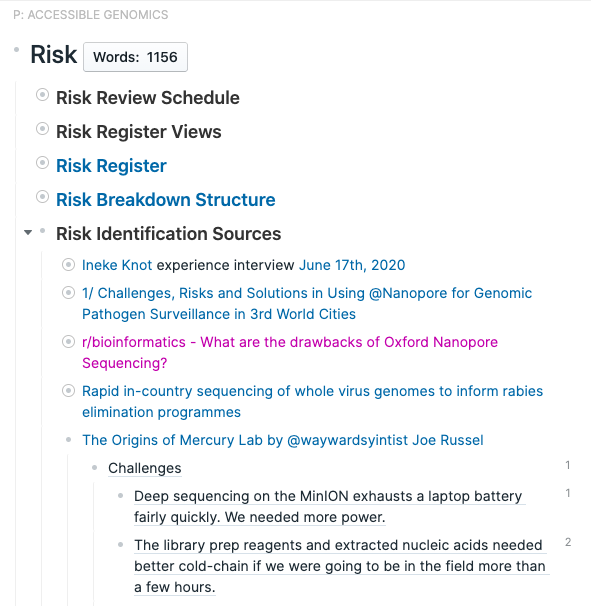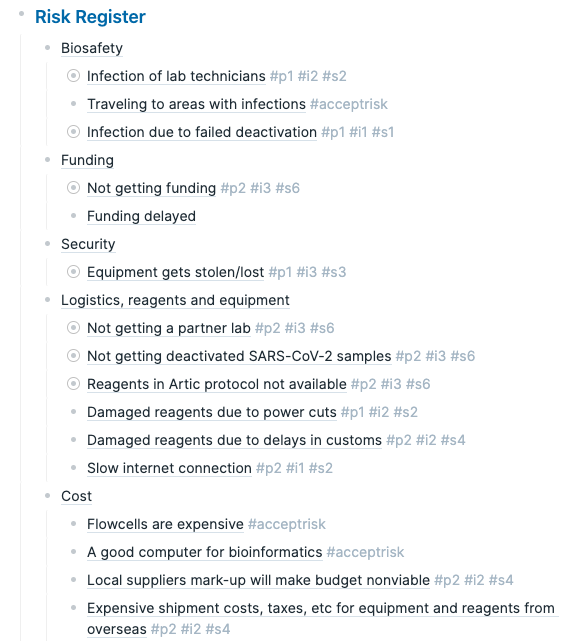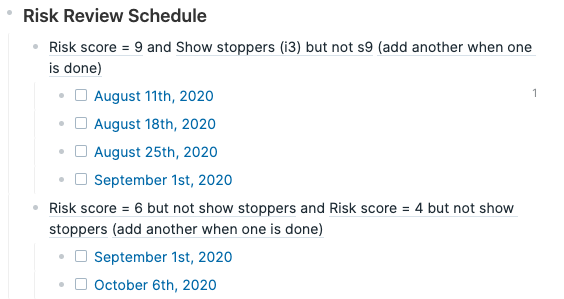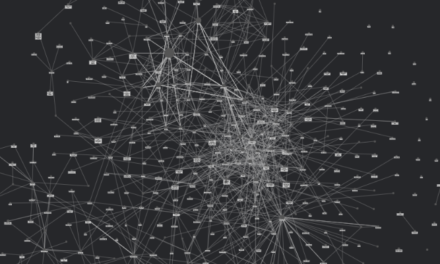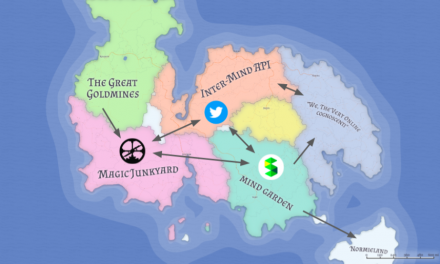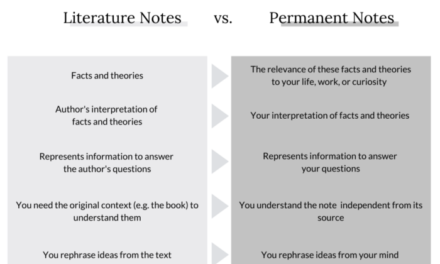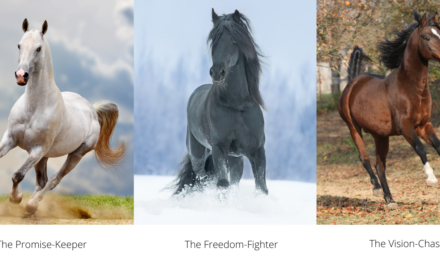Ultimately, why do you use Roam?
When I started, my answer was that it is the best software I’ve found to implement a Zettelkasten.
However, my actual work is entrepreneurship and project management. Roam slowly replaced many apps in my professional workflow. The low-hanging fruits were meeting notes, to do lists and noting down ideas on ongoing projects and operations.
When I started a new project a couple of months ago, I wondered how it would be like to use Roam for project management instead of my usual mindmaps, spreadsheets, text editors and task managers (eg, Trello, Asana). I’m a bit surprised how well it worked, but I shouldn’t have been. Tools for thought are not only for academics. They are also for those of us whose calling in life is to bring ideas to reality.
I am not only speaking about entrepreneurs and project managers. I mean anyone whose job requires bringing together people and technology to bring about change in the world: artists, civic and church leaders, administrators, and politicians.
If we are to be deliberate in designing our workflow, we have to ask: what should be in our idea-to-reality production stack? Note that our stacks are built not only with software, but also the mental frameworks that we use with Roam and other apps.
I made this concept map to help answer this question. I filled it out with the frameworks I use (*), the ones I use and teach (![]() ), and the ones I know about, am curious about or have used in the past, but currently don’t use (the rest).
), and the ones I know about, am curious about or have used in the past, but currently don’t use (the rest).
On top of answering the question, the idea-to-reality production stack gives us a language to describe the shape of our work. The work of intellectuals is to generate and grow ideas. The job of a project manager is to bring an idea to reality. The work of entrepreneurs span the three stages.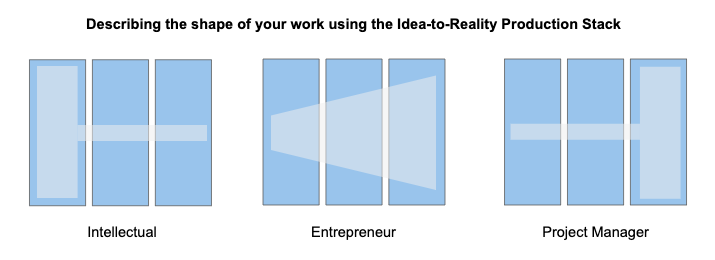
Laying down our tools this way leads us to be deliberate on picking the right one for the job at hand. At this point, do I need to generate ideas, validate those ideas or implement those ideas? Am I doing this by myself or with a team?
I share below the mental frameworks in my stack, some of which I use with Roam. I hope this leads to greater exploration of and discussion about using Roam to reimagine reality and change the world around us.
Frameworks for Generating Ideas
The Zettelkasten is a note-taking and organization system invented by the ultra-prolific social theorist Niklas Luhmann. The book to read is Sönke Ahrens’s “How to Take Smart Notes.” If you prefer a dense academic handling, here’s a nice paper. When I started with Roam, I really thought it was designed for the Zettelkasten.
A Mind Garden is a collection of interlinked and publicly available notes. A good place to start is this introduction by Anne-Laure Le Cunff and this drawing by Maggie Appleton:

I use Scrapbox for my (super messy) mind garden.
Morning Pages is from The Artist’s Way by Julia Cameron. It is part of the creative recovery program outlined in the book. You write three pages of raw unrestrained sentences every morning during the program. In Roam, I use {{[[POMO]]}} and {{word-count}}. I write like a maniac aiming for 750 words (approximately three pages) in one pomodoro (25 minutes). I’ve written the worst sentences in my life in my morning pages.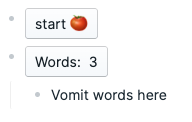 Artist Dates is the other component of Julia Cameron’s creative recovery program. It is simply going outside to do something fun or interesting by yourself. I prefer to call it Serendipity Walks because the inspirations I look for are more for business or social impact rather than art. And I like walking city streets.
Artist Dates is the other component of Julia Cameron’s creative recovery program. It is simply going outside to do something fun or interesting by yourself. I prefer to call it Serendipity Walks because the inspirations I look for are more for business or social impact rather than art. And I like walking city streets.
I do Morning Pages when the need arises and Serendipity Walks as often as I can. I have no proof yet, but these practices are probably effective at enhancing creativity. At least they are worth a try. I believe in them mainly because Liz Gilbert uses them. I read her book Big Magic some years ago and I immediately decided to adopt the book as my operating system for creativity.
My top takeaway from that book is to treat ideas as beings from another realm whose purpose is to manifest themselves in this world. They need a human partner to do this. Inspiration is their invitation to be that human partner. This sounds impossible and at the same time it feels so true. In any case, it works for me.
Self-authoring is a process created by a group of psychologists to systematically examine one’s past experiences (past authoring), strengths and and weaknesses (present authoring) and goals (future authoring). It is an intense inner journey. Future authoring has some basic goal crafting, so it is also a technique for making ideas real. I did this before the Roaman era, but nested blocks would have been perfect for this exercise.
I treat Twitter as an inter-mind API, a cross-brain Zettelkasten. Zettelkasten is a way to fabricate serendipity between your ideas. But how do you fabricate serendipity between ideas stored across minds? I could not think of tool better than Twitter at this point in time. Here’s how I visualize my process:
Brainstorming is the classic way for teams to come up with ideas. The goal is to post as many ideas without judgement and then filter them down with some scoring or filtering process.
Frameworks for Making Ideas Realistic
In the world of entrepreneurship, realistic ideas are not merely those that can be done. Realistic business ideas are those which the market is willing to sustain, and at the same time those that you in particular are fit to bring to reality. This is “product-market fit” and “founder-product fit” in the language of Lean Startup.
Lean Startup is presented as a systematic way to validate novel business models. In practice, you also generate a lot of ideas as you get out of the building and test whether your idea has legs.
I include the Mastermind in my stack because this is usually where I first test my new ideas. Here’s the version of the Mastermind that me and my buddies have developed in the past years. Four to six of us meet once a month and we follow this agenda:
- Wins since last time
- Biggest challenges
- Goals or system upgrades
- Cool things we discovered.
The act of explaining an idea is itself already a filter and a way of developing it further.
Design Thinking is a user-centric set of processes for solving problems.
Focus Group Discussion is a classic process used in the marketing world to check whether a new product or service fits a certain demographic.
These processes were made for teams. The only idea validation process I’ve encountered that seems to be for individuals is the Ask Method. It is a systematic way to segment your market and customize your messaging for each segment.
In the past decade, these processes of generating and validating ideas got packaged in multi-day orchestrations of intensive work. The ones I’ve attended are the Startup Weekend and Lean Startup Machine. I’ve been curious about the Mesa Method, but haven’t had the chance to attend an implementation or run it myself.
What I have orchestrated myself is a variation of the Lean LaunchPad, the experiential learning class created by Steve Blank to teach “evidence-based entrepreneurship.” Lean Startup is a fork by one of Steve Blank’s students, Eric Ries.
I plan to use Roam to do a slow-burn version of the Lean LaunchPad. There are a handful of genomics-related business models I was planning to eventually validate. Instead of doing this intensely in one season of my life, why not do the work gradually, similar to how creating atomic notes eventually lead to surprising emergent superstructures of ideas in the Zettelkasten? I’m still figuring this out and I’ll share my experiences as they happen.
Frameworks for Making Ideas Real
A project is the work that needs to be done to bring an idea to reality. If most of the work can be done by yourself, a task management system would suffice, especially if the project has few moving parts. If you need to deliver a project that has many moving parts and requires collaboration between many individuals, you would benefit from a project management system.
The Rider and the Stallion model is how I describe my current task management system. It riffs on Daniel Kahneman’s System 1 and System 2 model, and optimizes for saying Yes to inspiration, alignment to vision and current emotional fit. I explain it in this Twitter thread and I have recently started giving talks on it.
Getting Things Done (GTD) is one of the most well-known task management systems. The system is explained in the book of the same name by David Allen. GTD unfortunately doesn’t work for me. It makes my present self feel like a slave of my past self.
Building a Second Brain (BASB), I suspect, is Tiago Forte’s personal idea-to-reality production stack. Its task management component is inspired by GTD. It also has components that help one generate ideas and make those ideas realistic (eg, keeping ideas moving and sharing them with the world).
The Pomodoro technique consists of a cycle of intense burst of timed work interspersed with timed rests. Here’s the most popular variant:
- 25 min work sprint + 5 min rest (3x)
- 25 min work sprint + 15 min rest (1x)
- Repeat the cycle.
I recently attended a Goal Crafting Intensive by Complice. Going deep into crafting goals is one way to start making your ideas real. The central tension of goal crafting is that for deep achievements, you need your past self to coordinate the work of your present and future selves through commitment to a vision. However, your present and future selves almost always know better than your past self who crafted the goal.
I’ve been meaning to read The One Thing and incorporate its tools into my stack. This book summary shows that many aspects of the system aligns with mine.
Some ideas, usually the big ones, require the expertise and time of other people to bring to reality. The set of frameworks that coordinate the work of making these kinds of ideas real is codified in project management systems. They could be categorized into Classical Project Management and Agile Methodologies. If you are building things mostly with atoms, you use classical project management. If you are building mostly with bits, you use Agile.
The big two classical project management systems are PRINCE2 and the contents of the Project Management Body of Knowledge (PMBOK). The latter is sometimes called “PMP-style” project management. PMP (Project Management Professional) is the certification given by the Project Management Institute (PMI) to project managers who demonstrate capability with PMBOK-style project management.
Software for Your Idea-to-Reality Production Stack
I’m currently creating a training on using Roam for Classical Project Management. Sign up here if you want to be an early adopter. My strong opinion on project management training is that it should be centered around project management frameworks and software, which are solutions to problems project managers are hired to solve. Here’s a concept map which shows where I think Roam (at least its current version) fits in the work of project management.
Project management software like Trello, Asana, ClickUp or SmartSheet are essentially tools for aligning the work of teams. You start with your project activity list. You then use some planning functionality, like assigning dependencies in a Gantt chart view, setting task owners and due dates, automated reminders, and context-specific conversations between project members.
I was trained in project management as a hired gun. I was paid to bring other people’s ideas to reality. Now, I use project management to bring my ideas to reality. This has made software for conceptualizing and planning projects much more important.
Prior to Roam, I used mindmaps, spreadsheets and anything to write on (eg, word processors) for most of the project management frameworks. The work of project conceptualization and planning is mainly that of imagination: reimagining reality and imagining the pathway to that new reality. What could be better software for the work of imagination than a tool for networked thought? I’m excited to show #roamcult how I’m using Roam for these project management frameworks, and I also look forward to learning from you: we each have our own Roam-fu, and it would be interesting to see how different styles translate these frameworks in Roam.
Example: How I Use Roam for Project Risk Management
I mentioned above that I was surprised how well Roam worked with the project management frameworks I use. Here is one example.
At the minimum, project success means preventing failure. The systematic way of doing this is Project Risk Management. In order to manage project risks well, you want to program your attention. You want to allot greater attention to more important risks. This requires the following steps:
- Risk identification
- Risk scoring
- Risk response planning
- Risk response implementation
- Risk monitoring.
The Risk Breakdown Structure (RBS) is the framework for risk identification. Prior to Roam, my tool of choice for the RBS was the mindmap. Now I use nested blocks, which have fundamentally the same structure as mindmaps (although I’m really looking forward to a mindmap view feature in Roam). The advantage of using Roam is that my risk identification sources (eg, notes from interviews, papers and articles) are just a block reference away.
The Risk Register is the framework for risk scoring and risk response planning. In a separate nested structure, I block reference each of the risks identified. I then score them in terms of impact and probably with tags. I also use tags for the risk score (impact x probability). Prior to Roam, I used to copy-paste each risk from the mindmap to a spreadsheet.)
I then create queries for different risk scores. Once the risks are categorized by score, I do risk response planning, starting from the highest scoring risks. I may decide to accept (ie, neglect) lower scoring risks. Risk response planning means thinking of mitigation (ie, how to lower probability or impact) and contingency (plan B) for each risk.
Risk response implementation begins with adding the actions you need to implement your risk response to your work breakdown structure, budget, hiring plan, etc. I tag them with whatever aspect of the project they may impact (eg, scope, cost, HR), so I can work on them later on.
To prepare for risk monitoring, I page reference future dates, so that the task appears in my daily page when those days come. In this example, I chose to review the highest risks every week, middle ones every month, and I completely ignore the lowest-scoring risks. The rest of the time, I free my mind from these risks.
Below is a video of this process.
Did the Idea-to-Reality Production Stack Resonate with You?
If the Idea-to-Reality Production Stack resonated with you, I’d love to hear from you. I want to organize meetups of small groups to exchange notes on our own idea-to-reality production stacks and how we use Roam for them, and then have some sort of collective exchange.
If you found the project risk management example interesting, you might also want to sign-up for this upcoming training on Using Roam for Project Management.
For questions and comments, you can reach me on Twitter (@Roamfu or @kcorazo).

